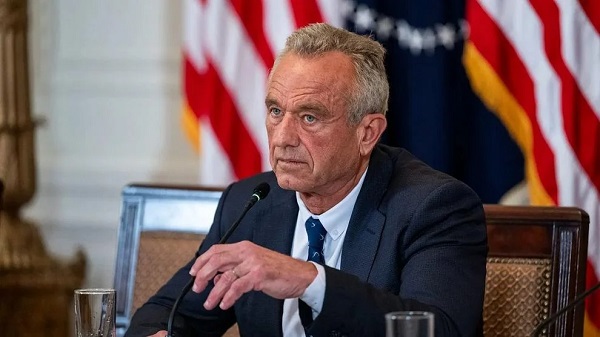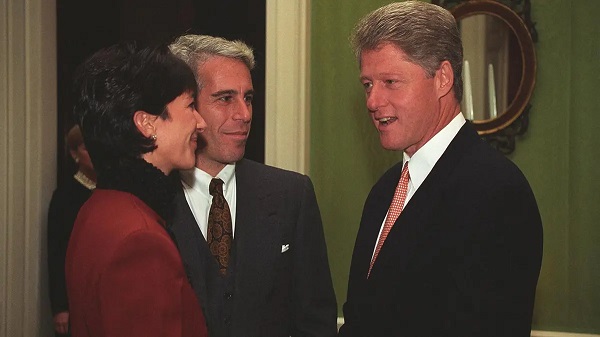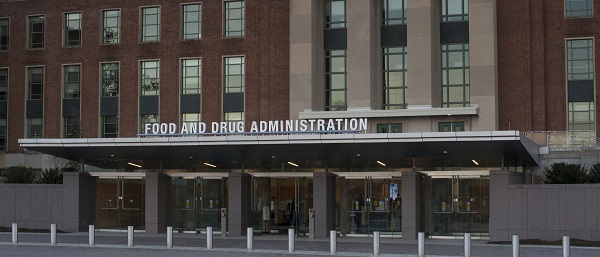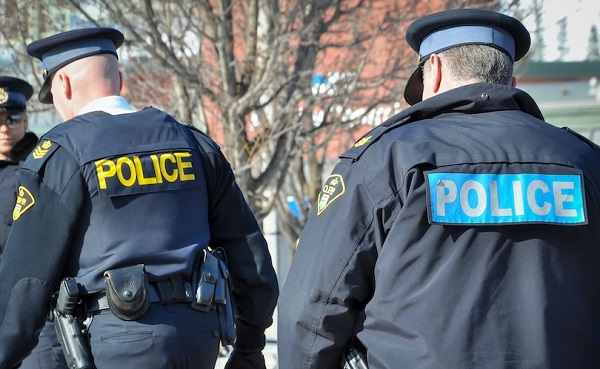Great Reset
Trudeau gov’t to make all women’s and men’s washrooms ‘gender neutral’ in Parliament buildings
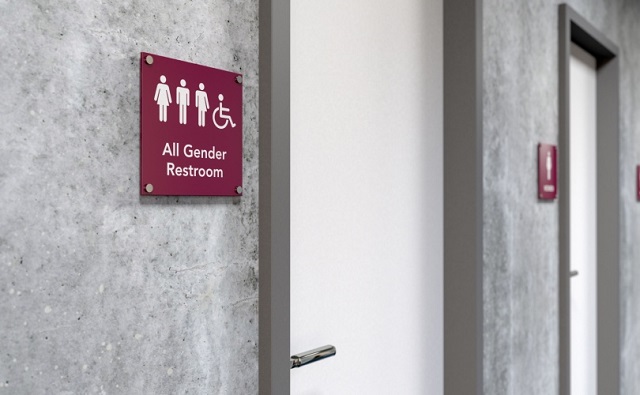
From LifeSiteNews
Trudeau’s washroom policy also extends to many federally regulated spaces, such as national parks, and has been criticized by even some women’s rights groups.
For the first time in decades, women will not have a washroom of their own on Canada’s Parliament Hill after the Canadian federal government of Prime Minister Justin Trudeau announced that all washrooms will soon become “gender neutral.”
The move, which will strip women and men of privacy when using the bathroom on Parliament Hill, was recently announced by Minister of Public Services Jean-Yves Duclos. Under his command and with the blessing of Trudeau, approximately 200 washrooms in the Centre Block area, along with the new welcome centre, will be made to be more “accessible” as well as “inclusive.”
According to Duclos, the washroom renovations are being done to “meet the expectations and needs of” LGBT Canadians and adapt to their “needs of the 2030s and beyond.”
The latest LGBT-charged move by the Trudeau government, according to Duclos, is part of a “very broad message of inclusion,” he claimed.
The “gender-neutral” washroom push comes after NDP MP Don Davies brought forth a petition to the House of Commons demanding that all male and female bathrooms be banned in federal workplaces.
“Exclusionary washroom policies cause significant barriers for trans, non-binary and gender non-conforming people,” Davies claimed.
At the turn of the 20th century, most public places, including government buildings in Canada, did not even have separate washrooms for women, with only men’s washrooms. It was not until the early-mid part of the 20th century after the first woman MP was elected in 1921 that women’s bathrooms slowly equaled men’s on Parliament Hill.
Women’s human rights are being violated by gender-neutral bathroom policy, says rights group
Trudeau’s washroom policy also extends to many federally regulated spaces, such as national parks, and has been criticized by even some women’s rights groups.
The Canadian Women’s Sex-Based Rights (CAWSBR) has raised the alarm that the removal of women’s only washrooms could lead to an increase in sexual violence against women.
“Women and girls in Canada are five more times to be sexually assaulted than males, with 99% of sexual assaults being perpetrated by men,” CAWSBR said.
“This disparity in terms of vulnerability and safety is the primary reason for why sex-segregated spaces have been considered a necessity (and, one could argue is a fundamental right for females, under the Canadian Human Rights Act), when it comes to facilities used in public and private sectors, including washrooms, change rooms, and hospital rooms.”
According to CAWSBR, the removal of “sex-segregated spaces” with the introduction of “gender-neutral” facilities means that “women-only spaces that continue to exist are being rendered meaningless, as any male who decides that they identify as a girl or woman may now use girls’/women’s facilities.”
“Girls and women, despite the Canadian Human Rights Act, despite being at high risk of sexual assault by males, are being ordered to open their spaces and their rights when it comes to their most vulnerable spaces to include males. Damn the consequences.”
Over the past few years, there has been a noticeable push in Western nations to actively promote gender ideology to young people, particularly in the United States and Canada.
This has led to governments at all levels actively going along with the demands of those involved in the LGBT agenda to have feminine hygiene products mandated in men’s bathrooms.
A new Canadian federal mandate under Trudeau came into effect on December 15, 2023, that forces Canadian federal workplaces, including military bases, to provide “menstruation kits” in men’s bathrooms to promote “inclusivity.”
Last month, LifeSiteNews reported on how after women’s menstrual products began appearing in men’s washrooms at Toronto public library locations a city resident blasted the move as a potential safety risk, saying that “nobody should have to deal with things like that when visiting a washroom.”
In 2017, the Senate passed a transgender rights bill that adds “gender expression” and “gender identity” to Canada’s Human Rights Code and to the Criminal Code’s hate crime section.
Digital ID
Canadian government launches trial version of digital ID for certain licenses, permits

From LifeSiteNews
The Employment and Social Development Canada (ESDC) department has officially confirmed it is developing a digital ID for certain licenses and permits.
The Employment and Social Development Canada (ESDC) department has officially confirmed it is developing a digital ID for certain licenses and permits, called “GC Issue and Verify,” which has already been listed on the Google Play store, as a trial-only app for certain users.
The digital ID claims the government can replace and be full “digital versions” of the “physical credentials they already provide today, like work permits and boating licenses.”
“Instead of only having physical credentials in their wallets, people will also be able to securely store their digital credentials on their mobile devices,” says the government.
According to ESDC officials, the digital IDs can be shared online or in-person “when needed, making it easy for departments, organizations, and businesses to validate their information.”
The government argued that since many Canadians already use “digital credentials without realizing it,” such as a digital ticket “stored on our mobile device instead of using a printed ticket,” this would be the same for IDs such as licenses.
ESDC said that “digital options” will be voluntary and that people can still use “traditional physical methods of verification,” instead.
READ: Canada releases new digital ID app for personal documents despite privacy concerns
The reality is that digital IDs and similar systems have long been pushed by globalist groups like the World Economic Forum, an organization with which Canadian Prime Minister Mark Carney has extensive ties, under the guise of ease of access and security.
Also, Canadians do not want digital IDs, as noted by Canada’s Privy Council research from 2023, which said there is strong public resistance to the use of digital IDs to access government services.
GC Issue and Verify is one of two digital ID projects on the go. As reported by LifeSiteNews, the Liberal government under Carney recently quietly released a new type of digital ID app on Google’s Play Store called GC Wallet.
Both GC Wallet and GC Issue and Verify are now being tested with federal partners, those being Transport Canada and Immigration, Refugees and Citizenship Canada.
During COVID, the Canadian federal government released a digital-type app called ArriveCAN app for travel that was a form of digital ID. The app was riddled with technical glitches along with privacy concerns from users.
As reported by LifeSiteNews, the Canadian government hired outside consultants tasked with looking into whether or not officials should proceed with creating a digital ID system for all citizens and residents.
Opp0sition MP Leslyn Lewis, recently warned Canadians to be “on guard” against a push by the ruling Liberal Party to bring forth digital IDs, saying they should be voluntary.
Censorship Industrial Complex
Canadian university censors free speech advocate who spoke out against Indigenous ‘mass grave’ hoax

From LifeSiteNews
Dr. Frances Widdowson was arrested and given a ticket at the University of Victoria campus after trying to engage in conversation about ‘the disputed claims of unmarked graves in Kamloops.’
A Canadian academic who spoke out against claims there are mass unmarked graves of kids on former Indigenous residential schools, and who was arrested on a university campus as a result for trespassing, is fighting back with the help of a top constitutional group.
Dr. Frances Widdowson was arrested and given a ticket on December 2, 2025, at the University of Victoria (UVic) campus after trying to engage in conversation about “the disputed claims of unmarked graves in Kamloops,” noted the Justice Centre for Constitutional Freedoms (JCCF) in a recent news release.
According to the JCCF, Widdowson was trying to initiate a “good faith” conversation with people on campus, along with the leader of OneBC provincial party, Dallas Brodi.
“My arrest at the University of Victoria is an indication of an institution that is completely unmoored from its academic purpose,” said Widdowson in a statement made available to LifeSiteNews.
She added that the “institution” has been “perpetuating the falsehood” of the remains of 215 children “being confirmed at Kamloops since 2021, and is intent on censoring any correction of this claim.”
“This should be of concern for everyone who believes that universities should be places of open inquiry and critical thinking, not propaganda and indoctrination,” she added.
UVic had the day before Widdowson’s arrest warned on its website that those in favor of free speech were “not permitted to attend UVic property for the purpose of speaking publicly.”
Despite the warning, Widdowson, when she came to campus, was met with some “100 aggressive protesters assembled where she intended to speak at Petch Fountain,” noted the JCCF.
The protesters consisted of self-identified Communists, along with Antifa-aligned people and Hamas supporters.
When Widdowson was confronted by university security, along with local police, she was served with a trespass notice.
“When she declined to leave, she was arrested, detained for about two hours, and charged under British Columbia’s Trespass Act—an offence punishable by fines up to $2,000 or up to six months’ imprisonment,” said the JCCF.
According to Constitutional lawyer Glenn Blackett, UVic actions are shameful, as it “receives hundreds of millions of taxpayer dollars annually while it facilitates the arrest of Canadians attempting to engage in free inquiry on campus.”
Widdowson’s legal team, with the help of the JCCF, will be defending her ticket to protect her “Charter-protected freedoms of expression and peaceful assembly.”
Widdowson served as a tenured professor at Mount Royal University in Calgary, Alberta, before she was fired over criticism of her views on identity politics and Indigenous policy, notes the JCCF. She was vindicated, however, as an arbitrator later found her termination was wrongful.
In 2021 and 2022, the mainstream media ran with inflammatory and dubious claims that hundreds of children were buried and disregarded by Catholic priests and nuns who ran some Canadian residential schools. The reality is, after four years, there have been no mass graves discovered at residential schools.
However, as the claims went unfounded, over 120 churches, most of them Catholic and many of them on Indigenous lands that serve the local population, have been burned to the ground, vandalized, or defiled in Canada since the spring of 2021.
Last year, retired Manitoba judge Brian Giesbrecht said Canadians are being “deliberately deceived by their own government” after blasting the former Trudeau government for “actively pursuing” a policy that blames the Catholic Church for the unfounded “deaths and secret burials” of Indigenous children.
As reported by LifeSiteNews, new private members’ Bill C-254, “An Act To Amend The Criminal Code” introduced by New Democrat MP Leah Gazan, looks to give jail time to people who engage in so-called “Denialism.” The bill would look to jail those who question the media and government narrative surrounding Canada’s “Indian Residential School system” that there are mass graves despite no evidence to support this claim.
-

 Business2 days ago
Business2 days agoSome Of The Wackiest Things Featured In Rand Paul’s New Report Alleging $1,639,135,969,608 In Gov’t Waste
-

 Energy2 days ago
Energy2 days ago‘The electric story is over’
-

 Alberta2 days ago
Alberta2 days agoOttawa-Alberta agreement may produce oligopoly in the oilsands
-
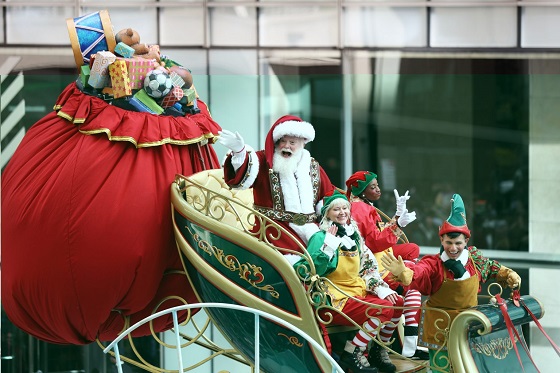
 Energy2 days ago
Energy2 days agoWestern Canada’s supply chain for Santa Claus
-

 Energy2 days ago
Energy2 days agoThe Top News Stories That Shaped Canadian Energy in 2025 and Will Continue to Shape Canadian Energy in 2026
-

 International2 days ago
International2 days ago$2.6 million raised for man who wrestled shotgun from Bondi Beach terrorist
-

 armed forces15 hours ago
armed forces15 hours agoRemembering Afghanistan and the sacrifices of our military families
-

 Fraser Institute15 hours ago
Fraser Institute15 hours agoHow to talk about housing at the holiday dinner table




